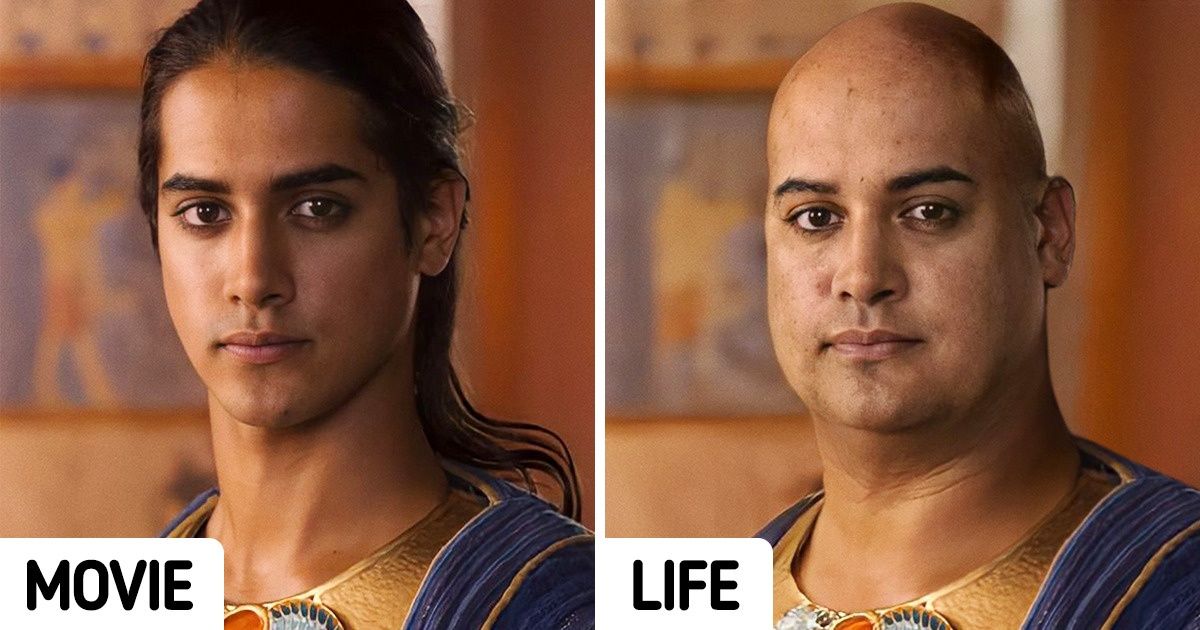20+ People Who Changed Their Look So Dramatically, Even Their Relatives Didn’t Recognize Them


Cinema is one of the most popular kinds of art and what entire mass culture is often based on. Thanks to films, we develop certain ideas about famous people, countries, and time periods. But not all of them are true.
We at Bright Side love busting the myths that many people believe thanks to movies. And this time, we decided to bust several stereotypes about Ancient Egypt.
In Ancient Egypt, they used 3 writing systems: hieroglyphic, hieratic, and demotic. The most beautiful and complicated one of them, hieroglyphics, was used to decorate monuments. The text written on rock or wood could be sacred or just stories. So if ancient Egyptians wanted to encrypt secret knowledge, they wouldn’t use hieroglyphs that many people could read.
There were a lot of legends about hieroglyphs. The last hieroglyphic writing dates back to 394 BCE. Sometime later, the last person that could write with hieroglyphs died.
For many years, nobody knew what hieroglyphs were until French linguist Jean-François Champollion deciphered the writing in 1822.
Almost every movie about Ancient Egypt contains a scene where the main character (usually an adventurous archaeologist) finds an ancient scroll and starts reading the text on it. But the thing is, there was no such thing as the Ancient Egyptian language. Egyptians spoke a lot of different dialects. So no matter how educated the scientist is, they can’t know all the dialects.
Another problem is that we don’t know what the language actually sounded like.
During almost all the periods of Ancient Egypt, hats and wigs were the most important accessories for men and women. Hats protected people from the sun and lice, and they were also an indicator of status and power. For example, Ramses II never appeared in public without a hat. Even in his chambers, he always wore one of his hats.
Yet in Ridley Scott’s Exodus: Gods and Kings, Joel Edgerton, who portrayed the Egyptian ruler, didn’t have anything on his head for the entire movie.
But the situation changed completely by the time the Ptolemaic Dynasty started. The Hellenic culture had an influence on many spheres of the lives of ancient Egyptians, including fashion. Women stopped wearing wigs and wore their hair like Greek women. The portraits of Cleopatra and the hairpins found in mummified women from that period prove it.
Judging by the images, Cleopatra had a bun of hair. She didn’t have any wigs with silver and gold. Also, her makeup was probably on the natural side, like most Greek women wore it.
In 2015, a mini-series, Tut, was released. It told the story of the Egyptian pharaoh, Tutankhamun. Avan Jogia portrayed the main role. The actor is a powerful and strong man, but scientists believe that Tutankhamun wasn’t that good-looking.
Due to a list of illnesses, Tutankhamun was really poorly developed and could only walk with a cane. He also looked feminine and had a bad bite.
Thanks to movies, we have the wrong idea of the Book of the Dead. Most films show it as an ancient book that, when disturbed, woke up the dormant evil spirits.
Books of the Dead really existed. But the idea of these books was that they only had power in the afterlife. Before death, wealthy Egyptians ordered a list of spells from scribes. The spells were supposed to help them overcome the obstacles and dangers of the world. It was a list of answers and passwords dead people would use to achieve eternal life.
This book was put into the tombs of its owners. Each book was made individually for the owner and didn’t have any copies. The customers decided how many chapters there should be in the book and which spells should be included.
The history of Ancient Egypt is around 30 centuries long. During this time, there were a lot of rulers and even different gods.
But this didn’t stop Hollywood producers from mixing historic figures from different time periods in the same films. For example, the first film in The Mummy franchise is based on the tragic love between Imhotep and Ankhesenamun.
But the funny thing is that these 2 couldn’t have met in real life because they lived more than 1,000 years apart. Imhotep was born in the twenty-seventh century BCE and Ankhesenamun was born in 1348 BCE and was Tutankhamun’s wife.
Which of these facts amazed you the most? Maybe you know some other historical mistakes we believe in thanks to movies.











